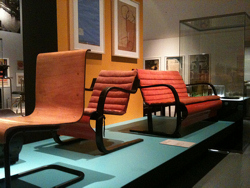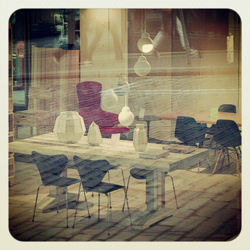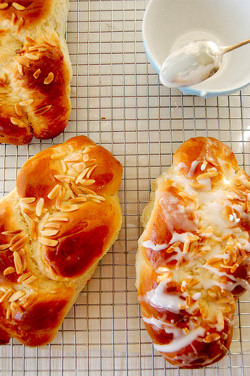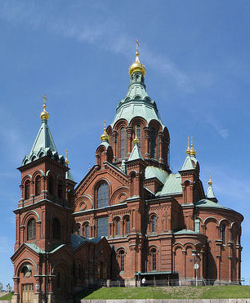A design weekend in Helsinki
Design has always been part of Helsinki’s DNA. Every inch of this city on the sea is filled with examples of cutting-edge architecture and trendy boutiques, but this year, Helsinki’s design credentials have been well and truly made official as it’s been appointed World Design Capital for 2012. That, and the fact it ranked second in The New York Times list of the top 45 places to visit, establishes the city as the design destination of choice. All year long, Helsinki will be celebrating its status with festivals and exhibitions to bring the capital alive - so now is the time to visit for a city weekend break with a difference.
 Check out the Alvar Aalto exhibits at the Design Museum
Check out the Alvar Aalto exhibits at the Design MuseumCreative Commons / JForth
If you haven’t heard of Alvar Aalto, then you certainly will have done by the time you leave Helsinki. Aalto was Finland’s most famous architect and designer - not only did he design buildings, but he also made everything (furniture, lights, accessories) to go inside them - and he is credited as having created 20th century modernism as we know it today.
For an introduction to Aalto, make the Design Museum (Korkeavuorenkatu 23) your first stop. The museum is a must for contextualising the Finnish love of design - downstairs pays tribute to Aalto’s extensive work (he worked from the 1920s up until the 1970s), with a permanent display showcasing his iconic, mid-century modern designs which are so incredibly popular today (think Mad Men).
To see Aalto’s work in situ walk back towards the Esplanadi, a pretty park framed by the city centre’s main shopping streets, to Cafe Aalto (Pohjoisesplanadi 39), inside the Academic Bookshop. On the outside it’s a 1960s-style block but the inside is an enormous white bookshop with the cafe on the second floor. Everything has been designed by Aalto, from the building’s huge angular skylights to the wonderful vintage brass bell lights overhanging the tables. It’s not cheap (a toasted sandwich is €10), but it’s worth staying a while to take in the incredible skylights and design.
Then cross the Esplanadi and pop into The Savoy - this high-class rooftop restaurant, which sits on top of a multipurpose building, was designed by Aalto and shows off his stripped back but striking style. Even if you don’t plan to eat here you can still take a look - the staff are used to visitors taking a quick glimpse around.
 Design-aficionados will love the Artek shop
Design-aficionados will love the Artek shopCreative Commons / shiver shi
If home design and interiors are your thing, then you’ll be in your element in Helsinki. The tree-lined boulevards on either side of the Esplanadi are home to some of Finland’s most famous designer names, including Marimekko (Pohjoisesplanadi, 2), the textile and homeware company founded in 1951 known for its colourful prints and clothes. Along the same boulevard there’s also Iitalla (Pohjoisesplanadi, 25), the ceramic and glassware company while opposite is Artek, (Eteläesplanadi, 18), the store which Aalto founded and sells his designs.
Punavuori, the area known as Helsinki’s design district, is also worth exploring; it’s a lot less grand than the shops surrounding the Esplanadi, but it’s got plenty of character, with old Finnish stone buildings painted in dark greens and muted yellows. The Design Forum Shop (Erottajankatu, 7) stocks innovative contemporary homeware, such as a range of sleek ceramics and striking lamps all by Nordic designers. For fans of a less austere style, try Pino (Fredrikinkatu, 22), a quirky boutique with fun accessories like wall stickers, fancy stationery and more random finds like vintage tea tins and typographic monograms.
 Grab some tasty pulla - cardamom and cinammon buns
Grab some tasty pulla - cardamom and cinammon bunsCreative Commons / Melange
As well as being the design district, Punavuori is home to some quirky eateries. Fleuriste (Uudenmaankatu, 13) is the perfect place to unwind if you’ve been on your feet walking all day. Wonderfully relaxing, it’s part cafe, part florist, with a shabby chic Parisian vibe to it (the Amelie soundtrack plays more or less all day), serving fragrant green teas, coffees and delicious blueberry cheesecakes on delicate vintage china.
Cafe Bar 9, on the same street, is also a fantastically unfussy place for big plates of hot, fresh and tasty food without the Helsinki price tag (it’s also great for vegetarians; a spicy halloumi stew cost around €13). It’s very low-key, which makes it a change from Helsinki’s generally pristine style.
Further out of Punavuori, and back near the Esplanadi in the heart of the city’s shopping area is Eat and Joy. It’s in the basement of Kluuvi, a fairly unimpressive looking shopping mall (Aleksanterinkatu), but don’t let that put you off: this isn’t your average shopping centre food hall. Downstairs, there’s plenty of delicious organic Finnish food, including hearty soups to take away, freshly baked traditional rye breads, organic cheeses and pulla, sweet cinnamon and cardamom Finnish buns.
Zone out
The Kamppi Chapel of Silence (Narinkka Square) is one of Helsinki’s newest and most modern monuments, constructed especially in honour of the city’s World Design Capital status. The chapel shows off Finland’s design flair, a large, egg-shaped curved creation, made out of dark wood. Open fully from May, the chapel is more giant meditation suite than religious space, where people can simply escape the city buzz and take some time out.
There are plenty of traditional churches to gaze at too - the city’s main cathedral, Tuomiokirkko, is built on a hill and exudes Grecian grandeur, with a white pillared entrance and ornate domes. Walk up the steps and you’ll be able to look down towards the huge and busy harbour, where there are often farmers’ and fresh fish markets during the week.
 Escape it all at the Russian-looking Uspenski cathedral
Escape it all at the Russian-looking Uspenski cathedralCreative Commons / Matti Mattila
Where to stay
Klaus K is one of Helsinki’s first design hotels, designed by the Finnish architect Lars Sonck in the early 20th century. The interiors are modern - big, printed feature walls and unusual light installations - and it’s in a prime location, on the edge of the Design District and minutes from the Esplanadi (rooms from €120 a night).
Don’t miss
There are exhibitions as part of the World Design Capital celebrations all year. The full calendar (http://wdchelsinki2012.fi/en/programme) lists all the details, but look out in particular for the Design District week in June, the children’s arts festival in July and the Design Market and Fashion Film Festival in August, which will be showcasing films with a fashion edge.
Do you have any Feedback about this page?
© 2025 Columbus Travel Media Ltd. All rights reserved. No part of this site may be reproduced without our written permission, click here for information on Columbus Content Solutions.









 You know where
You know where